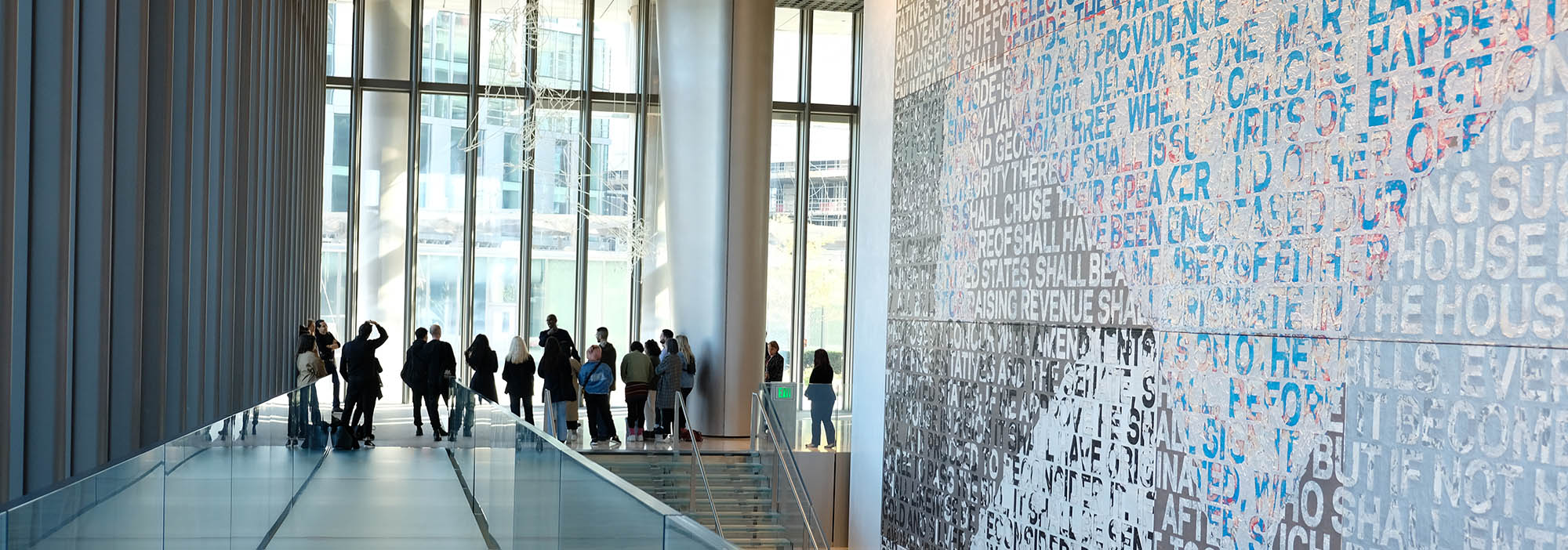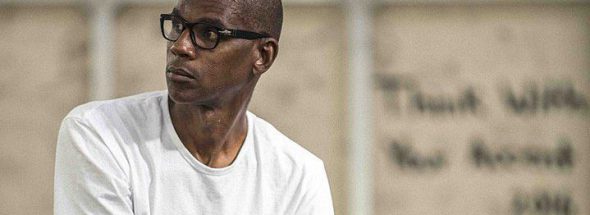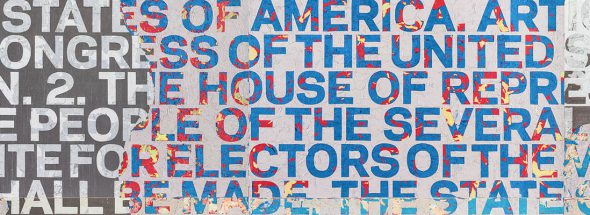
Art in Embassies artist Mark Bradford met at U.S. Embassy London with students from the Royal College of Art at the location of his site-specific, large-scale commission We the People.
American contemporary artist Mark Bradford and acclaimed curator Michael Auping from the Museum of Modern Art in Fort Worth, Texas, launched the second iteration of the American Artist Lecture Series at Tate Modern in London on September 30, 2019. The series is a collaboration between Tate, Art in Embassies, and the U.S. Embassy in London. Previous speakers have included Glenn Ligon, Julie Mehretu, Spencer Finch, Richard Tuttle, Brice Marden, and Maya Lin. The day after the opening lecture, Bradford met at the Embassy with students from the Royal College of Art at the location of his site-specific, large-scale commission We the People. Many of the students had attended the previous night’s talk and were eager to engage with the artist about his career and practice.
Bradford opened his remarks to the students by discussing how he started painting after enrolling in art school late in life. Merchant billboards, posters, and other found materials are media the artist uses to engage issues of race, queerness, and social inequality, and he went into great detail about his relationship to paper, as both an ordinary material and an extraordinary conveyor of society’s intentions and rights. He explained how social engagement is essential to his work and the importance of bringing contemporary art and ideas into communities with limited access to museums and other cultural institutions. Art + Practice, a project he co-founded with activist Allan DiCastro and philanthropist and art collector Eileen Norton, supports the needs of eighteen- to twenty-four-year-old foster youth in Leimert Park, Los Angeles, and provides free access to museum-curated contemporary art celebrating artists of color. DiCastro and Norton were in attendance at the Embassy.
Bradford also provided an overview of his motivations and inspirations and explored his political insights and the layered approach to his work. Students heard advice for their practice at school, post-graduation studio practice, and collaboration with art peers, including curatorial fellows and writers. They asked questions, and Bradford led the group in a dialogue on what it means to be an artist in today’s society.

